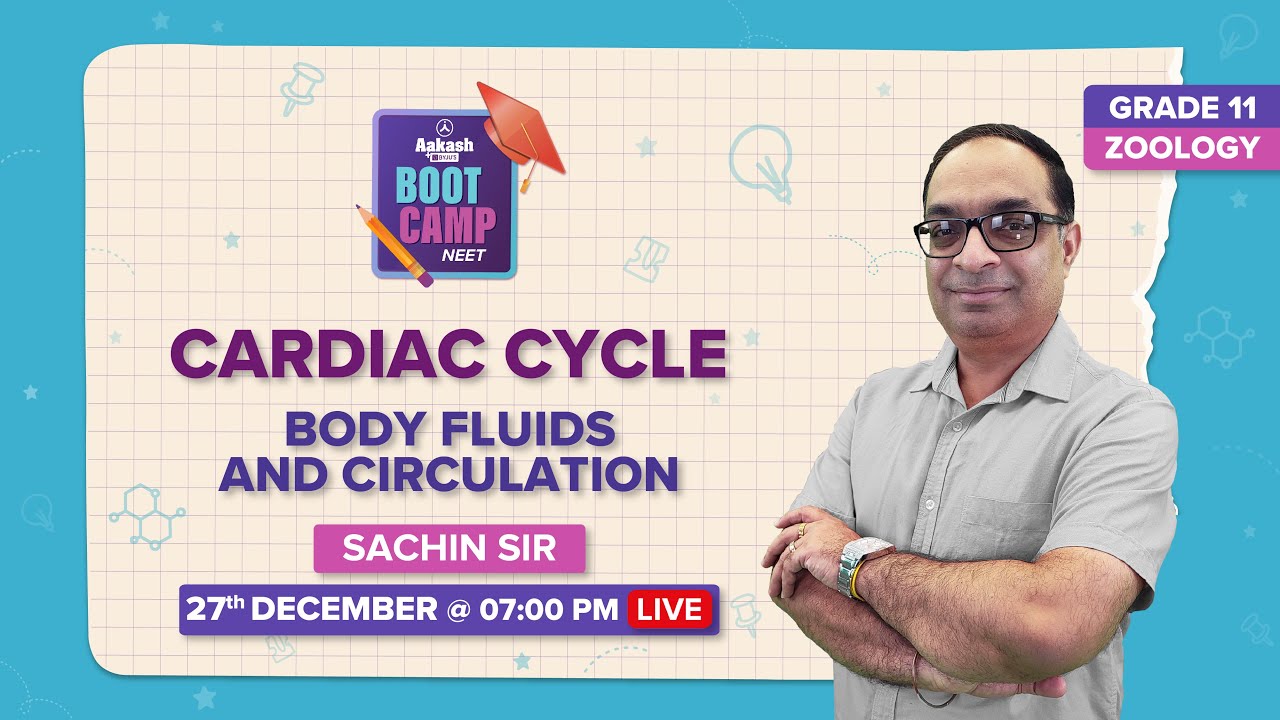ECG or electrocardiography is a tool to assess, evaluate and diagnose the muscular and electrical functionalities of the heart. Here, the electrodes are placed on the skin to note the normal working conditions of the heart. These are electrodes which detect the tiniest bit of change in the electrical pathway arising from the heart muscles in the electrophysiologic patterns of the depolarizing in every heartbeat.
Also Check:
- NEET Biology Syllabus
- NEET Biology Important Topics
- NEET Biology MCQs
- How to Score 170 Plus in NEET Physics
NEET MCQ ECG PDF:-Download the PDF Here
1. ECG (Electrocardiogram) was developed first by
(a) Wilhelm His
(b) Steward
(c) Hubert Mann
(d) Willem Einthoven
Answer: (d)
2. This is the classic ECG change in MI (myocardial infarction)
(a) ST-segment elevation
(b) T-wave inversion
(c) Development of an abnormal Q wave
(d) All of these
Answer: (d)
3. In which of these conditions can widen QRS and Tall-tented T waves be observed?
(a) Hyponatremia
(b) Hyperkalemia
(c) Hyperglycemia
(d) Hyperphosphatemia
Answer: (b)
4. Hypokalemia is the condition of low potassium levels in your blood. Hypokalemia ECG changes are observed by
(a) ST segment elevation
(b) U wave (a position deflection after the T wave)
(c) Tall peaked T waves
(d) Widening of the QRS complex and increased amplitude
Answer: (b)
5. A normal ECG report must consist of the following information
(a) Rhythm, cardiac axis
(b) Conduction intervals
(c) Description of the ST segments, QRS complexes, T-waves
(d) All of these
Answer: (d)
6. For the normal heartbeat, depolarization stimulus originates in
(a) His-bundle areas
(b) Epicardium
(c) Sinoatrial (SA)node
(d) Atrioventricular (AV) node
Answer: (c)
7. The characteristics – slurring of the initial QRS deflection, shortened PR interval, and prolonged QRS duration are of this condition
(a) Atrial tachycardia
(b) Left bundle branch block
(c) WPW (Wolff-Parkinson-White) syndrome
(d) Myocardial ischemia
Answer: (c)
8. P wave indicates
(a) Depolarization of right ventricle
(b) Depolarization of left ventricle
(c) Depolarization of both atria
(d) Atria to ventricular conduction time
Answer: (c)
9. Ventricular muscle depolarization is indicated by
(a) PR interval
(b) P wave
(c) U wave
(d) The QRS complex
Answer: (d)
10. ECG identified by the PR interval tends to become longer with every succeeding ECG complex until there is a P wave not followed by a QRS is observed in
(a) Third-Degree Atrioventricular Block
(B) Second-Degree Atrioventricular Block, Type II
(C) Second-Degree Atrioventricular Block, Type I
(D) First-Degree Atrioventricular Block, Type II
Answer: (c)
Recommended Video:

Important MCQs for NEET Biology:
Comments